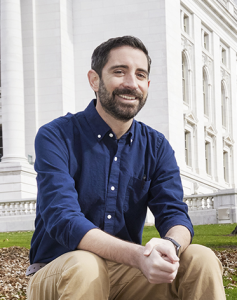By the time next month’s election is over, almost half of Wisconsin’s more than 400 school districts will have asked voters to approve increases in local funding this year, to the tune of nearly $6 billion.
The slew of referendums on the November ballot — 139 questions from 120 school districts — builds on the 103 referendums that appeared on Wisconsin ballots in February and April. That’s the most to appear on state ballots in a single election year since at least 2000, according to the nonpartisan Wisconsin Policy Forum.
The referendums on the Nov. 5 ballot, including six in Dane County districts, ask voters to weigh in on new borrowing for capital expenses or temporary or permanent increases in schools’ operating budgets. All told, the requests amount to about $4.29 billion, with nearly $3.5 billion of that for new construction or to maintain and modernize aging facilities.
People are also reading…
School districts sought about $1.67 billion in the spring primary and general election. Sixty-two of those questions passed, authorizing just over $1 billion in additional funds for school districts, according to the Policy Forum.
State school Superintendent Jill Underly lays the growing number of referendums at the feet of the state Legislature, which she and others say is failing to adequately fund public schools. The Policy Forum reported in 2022 Wisconsin’s per-pupil spending ranked 25th among all states, while the increase in per-pupil spending from 2002 to 2020 was the third-smallest of any state, after Idaho and Indiana.
The Wisconsin Counties Association’s nonpartisan research arm Forward Analytics reported last year that referendum-approved funding for K-12 schools in the state has risen from $32 million in 2000, to $180 million in 2010, to $650 million last year.
“Schools are doing the best that they can with the limited resources they have,” Underly said. “We still have to pay for teachers, we still have to pay for utilities and transportation, just like we all do in our own homes, and those costs have gone up while the state commitment has gone down. So it’s really putting schools in these impossible situations, where the last resort is having to go to referendum.”
Rep. Mark Born, R-Beaver Dam, who co-chairs the Legislature’s budget committee, said the reasons so many districts are going back to taxpayers for more money are more far more complicated. Those include rising costs from inflation, declining enrollment, meaning fewer state dollars, and the end of one-time federal dollars tied to COVID-19 relief.
When revenue limits were first imposed on school districts in the 1993-95 budget, they were allowed to grow each year with inflation, according to the Legislative Fiscal Bureau. That ended in 2009, when the inflation adjustment was removed — forcing more districts to cut their budgets or pursue referendums.
Even so, Born said lawmakers have increased funding for schools in every biennial budget since he joined the Legislature 12 years ago. The state’s current two-year spending plan increased funding for general school aids — the largest form of state support for K-12 schools — for the 2024-25 school year by nearly $225 million, or about 4.2%.
“That’s a significant investment from the state of Wisconsin in education,” Born said. “And so just to constantly hear that we’re not funding it enough or not funding it, is obviously not true when you’re talking about that level of investment from the state.”
For better or worse, he said, Wisconsin gives school districts control over their own budgets.
“Those folks get to decide how they’re spending money and they’re all different in their own way,” he said. “From urban to rural, declining enrollment to steady enrollment, to property values … so when you’re trying to set statewide policy, it’s difficult.”
Referendums are just a tool districts can use when they need more money than they are allowed under the state caps in combined state aid, property taxes and other, more limited sources, like federal grants.
“The communities can decide with those referendum questions, ‘Yes, we want to do new buildings,’ or ‘Yes, we want to do more operating referendums to keep our smaller, local school thriving,’” Born said. “That’s an option, but that’s not a statewide policy decision because that’s so different from place to place.”
The Madison School District, for example, will ask voters this November to approve two referendums totaling $607 million — the largest funding request ever put forward by the district. That includes a $100 million operating referendum — which ramps up over four years but then authorizes the school district to levy taxes above the state caps in perpetuity — to fund raises for staff, pay for new teacher and mental health positions, offset an estimated increase of about $15 million in health care costs and fill budget holes left by expiring federal pandemic aid
A second ballot question seeks a $507 million facilities referendum to pay for updates to 10 schools: Five new buildings, some of which house more than one school, would be built, and two others would be renovated.
Voters feel the squeeze
While referendum questions typically succeed, the 60% pass rate for the questions on the February and April ballots marked the lowest approval rate among midterm or presidential election years since at least 2010, according the Policy Forum.
Dale Knapp, director of research and analytics with Forward Analytics, told the Wisconsin State Journal last month he anticipates passage rates will continue to decline this fall.
“People will obviously vote with their wallet,” Knapp said. “There’s this contrast where they really want their schools to be fully funded and be able to provide the programs, and yet they know with this referendum, it’s coming out of their pocket.”
Underly said she understands the fatigue some voters may feel when facing yet another round of referendums but argued state funding has been inadequate, especially in light of inflation and the expiration of one-time federal funds.
“I think it’s normal for the public to wonder, ‘Why are they asking for this all the time?’” Underly said. “The reason we have so many referendums is because our legislature has underfunded public education for so long and our school districts need the resources and the funding not just to survive … but to certainly thrive.”
Born acknowledged many school districts are facing unique challenges but said the expiration of one-time federal pandemic funds should have been expected.
“Everyone knew that was one-time money,” he said. “Everyone knew they had hard deadlines when they need to be spent by. That was never a secret. No superintendent should have been surprised by that.”
An increase state aid and a wild veto
Everyone also knew how much school districts were clamoring for more money, and last year the Republican-controlled Legislature and Democratic Gov. Tony Evers agreed to boost K-12 funding by more than $1 billion. The agreement included a $325-per-pupil increase in school districts’ revenue limits for the next two fiscal years, and per-pupil aid increases for choice and independent charter schools that would give K-8 students a $1,101 increase and high school students a nearly $3,000 increase. The changes amounted to a more than $260 million increase per year.
That budget provision came with a bit of a Trojan horse for Republicans, however, when Evers used his partial veto to allow schools to continue to raise revenue by $325 per student per year for the next 400 years. Republicans have challenged the veto in a lawsuit, which even liberal justices on the Wisconsin Supreme Court called “absurd” and “outrageous“ at a hearing earlier this month.
“I’m sure that there will be new money in K-12 funding in this next budget, but whether it will be something that’s part a discussion between the Legislature and the governor, or if it’s just going to be driven by this current law — the 400-year veto — remains to be seen based on pending court actions,” Born said. “My crystal ball isn’t clear on that, but we’ll see.”
Underly, meanwhile, said her next budget request will seek to tap into the state’s $4.6 billion projected budget surplus to fund special education needs, mental health services and teacher working conditions. Additional state aid should help ease the need for school districts to have to go to their local voters via referendum, she added.
“It’s like a scale,” Underly said. “If the state side goes down and the scale weighs down, the local side has to go up. The local has to be able to kick in more, and that’s why we have to go to referendum.”
More than the overall amount school districts can raise, Born said he wants the Legislature to make sure that the investments taxpayers are making in their schools “do the things that they need to do to educate our kids, and what are the outcomes,” he said. “I think those are always the bigger questions that need to be answered.”
Districts aren’t alone
School district referendums aren’t the only funding-related matters on the November budget. According to the Wisconsin Elections Commission, 14 towns, villages and cities — which are also subject to state limits on how much they can raise property taxes — have questions on the November ballot seeking public approval to exceed their levy limits.
In Madison, voters are being asked to approve a first-ever $22 million referendum, which city officials say is needed to maintain existing city services.
Referendums in Wisconsin’s more than 1,800 municipalities were rare in the first decade after levy limits were approved in 2005, with just a handful each year. But by 2018 there were 14. And two years ago, voters in the 2022 election approved 29 municipal and county referendums, authorizing roughly $23.8 million in additional taxes — the most in a single year.
Wisconsin State Journal reporters have been digging into what got us here, what's at stake and what the referendums mean for residents.






















